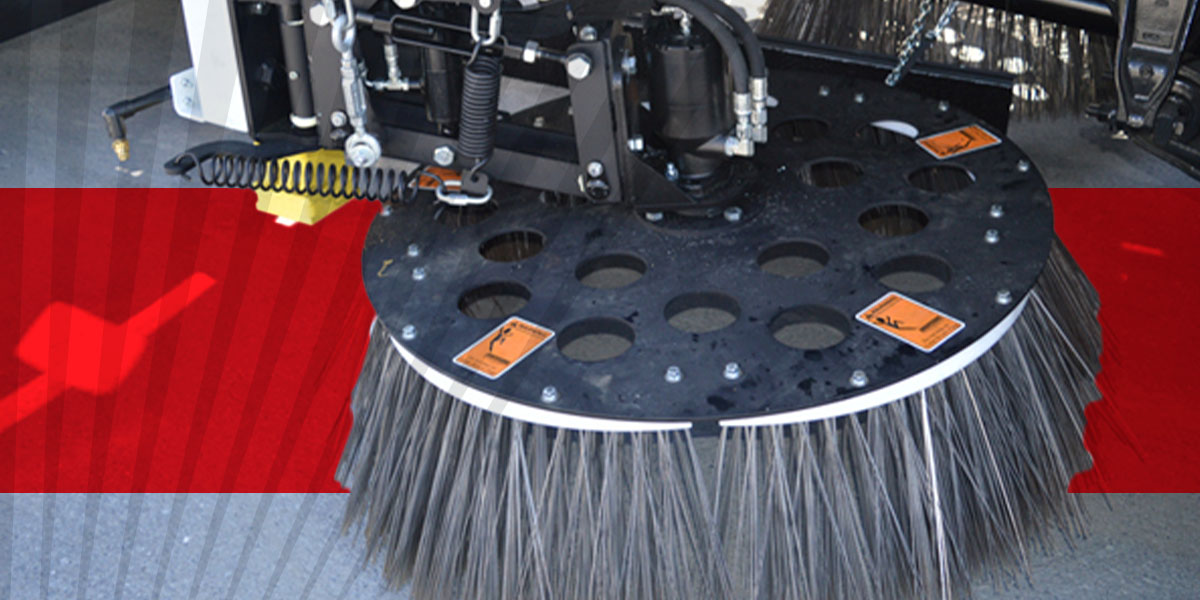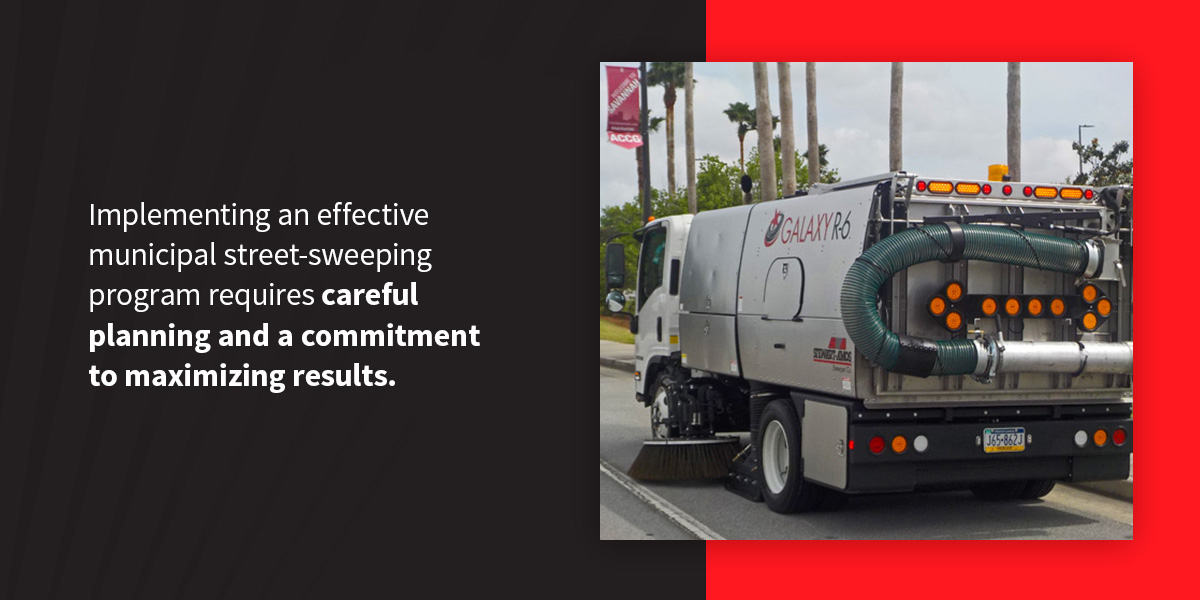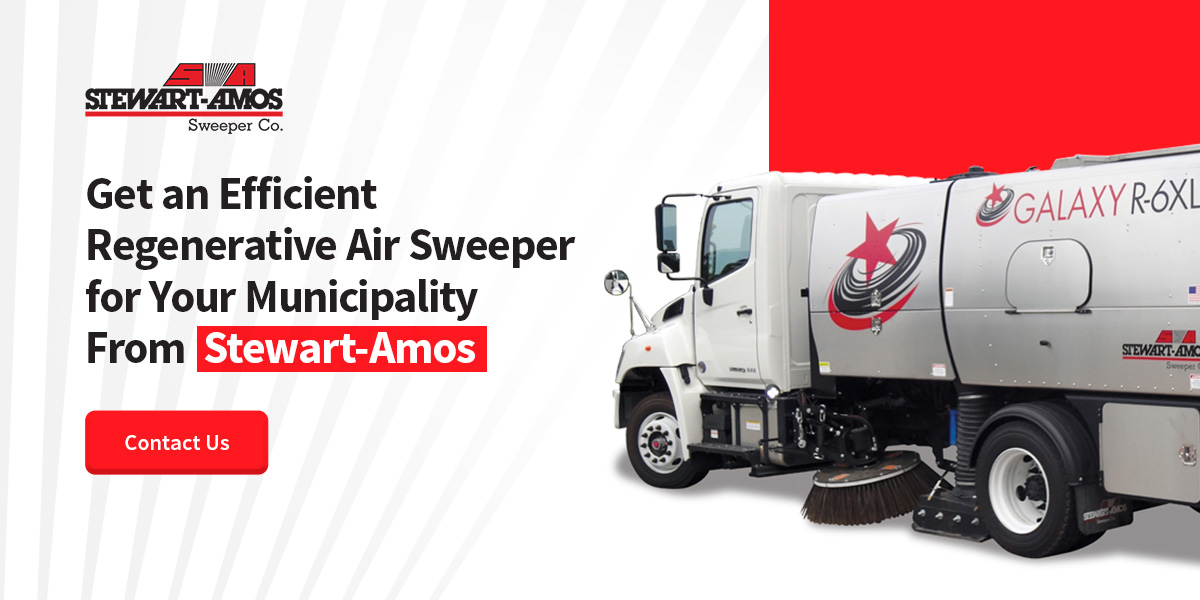In the bustling metropolises that shape our modern world, municipality street sweeping stands as a silent guardian, working to preserve our cities’ vitality and aesthetic appeal. Municipal street sweepers diligently remove dust and pollutants regularly. They also safeguard residents’ health and well-being while keeping our streets safe and welcoming. Street sweeping also enhances road safety, fosters smooth transportation and creates a secure environment. As cities strive to become more sustainable, the importance of effective municipal street-sweeping practices cannot be overstated.

Why Is Municipal Street Sweeping Important for Municipalities and Cities?
This practice is a cornerstone of responsible urban management with a profound impact on environmental health, urban beauty and road safety. The following reasons are why city street sweeping is important for municipalities and cities.
Reducing Pollution and Dust
By effectively capturing and removing millions of pounds of dust and dirt from our streets, this diligent practice prevents these particulates from circulating in the air and water we breathe. The proactive removal of debris, leaves and litter helps maintain the overall cleanliness of the urban environment, creating healthier living conditions for residents and reducing respiratory ailments.
Creating a More Beautiful City
Municipal street sweeping helps transform the face of our cities into captivating landscapes of beauty. By consistently sweeping the streets and ensuring their pristine appearance, municipalities uplift the aesthetic appeal of their surroundings. The clean streets elevate the visual charm of neighborhoods and public spaces and instill a sense of pride and belonging among residents. The overall effect is a beautiful city that becomes a beacon of attraction, drawing visitors, tourists and investment and fueling economic growth and vitality.
Enhancing Road Safety
Accumulating debris, leaves and litter on roads can lead to hazardous conditions, compromising vehicle traction and maneuverability. Excessive dirt and garbage increase the risk of accidents and endanger the safety of pedestrians and motorists alike. By proactively sweeping streets, municipalities mitigate these risks, maintaining clear visibility and removing obstacles that could impede traffic flow. Sweeping streets regularly creates safer roads and fosters a secure urban environment for residents and visitors.
Protecting Water Quality and Environment
Municipal street sweeping protects water quality and preserves the environment. As debris and pollutants accumulate on streets, they have the potential to wash into storm drains and contaminate local water bodies, such as rivers, lakes and streams. Street sweeping effectively captures and removes these contaminants before reaching waterways, safeguarding water quality and preserving aquatic ecosystems. By preventing the buildup of pollutants, municipalities demonstrate their commitment to environmental stewardship and contribute to the overall sustainability of their communities.

8 Tips for Municipal Street Sweeping
Implementing an effective municipal street-sweeping program requires careful planning and a commitment to maximizing results. You can optimize your street-sweeping program by incorporating some municipal street-sweeping tips. Implementing road sweeping tips demonstrates a commitment to cleaner, safer and more aesthetically pleasing communities for residents and visitors alike. Our top city street-sweeping tips include the following:
- Develop a comprehensive sweeping plan: Assess your city’s specific needs and develop a sweeping schedule covering all areas. Consider factors such as traffic patterns, weather conditions and residential density to create an optimized plan. By systematically sweeping different zones on designated days, you can ensure that every street receives regular attention.
- Inform residents of the sweeping schedule: Make the sweeping program readily available to the public online and through other communication channels. Encourage residents to remove their vehicles from the streets during the scheduled sweeping time. Parking restrictions or reminders can help ensure compliance.
- Prioritize high-traffic streets: If time and resources are limited, prioritize sweeping efforts on high-traffic streets. These areas tend to accumulate more debris and require more frequent attention. By prioritizing the busiest thoroughfares, you address the community’s immediate needs and improve road safety where it matters most.
- Maintain sweepers and replace brooms regularly: To optimize the efficiency of your street sweeping operations, periodically maintain your sweepers and replace worn-out brooms. Conduct routine inspections to identify any mechanical issues and promptly address them. Regularly inspect and replace brooms to ensure effective debris collection.
- Control sweeper speed: Avoid sweeping above 7 miles per hour, as excessive speed can result in missed pollutants and reduced effectiveness. Slower speeds allow the sweeper to collect debris thoroughly, ensuring a cleaner outcome. Encourage your operators to adhere to recommended speeds to achieve optimal results.
- Monitor sweeping efficiency with GPS: Leveraging technology can greatly improve the efficiency and effectiveness of your street sweeping operations. Equip your sweepers with GPS tracking systems to monitor their routes and performance. GPS data can help identify areas that may have been missed or require additional attention.
- Regularly evaluate and adjust the sweeping plan: Periodically review and evaluate the effectiveness of your sweeping plan. Consider changing traffic patterns, construction projects and seasonal variations in debris accumulation. Adjust the schedule and routes to ensure comprehensive coverage and efficient resource allocation.
- Embrace technology for data-driven decision-making: The last of the street-sweeping tips is to use technology and data analysis to inform and improve street-sweeping operations. A data collection system can capture information on sweeping routes, equipment performance and debris accumulation. Analyze this data to identify areas of high debris concentration, optimize routes and allocate resources efficiently.

Get an Efficient Regenerative Air Sweeper for Your Municipality From Stewart-Amos
The partnership between municipalities and industry leaders is instrumental in achieving cleaner, safer and more beautiful cities. Stewart-Amos Sweeper Co., a trailblazer in the field, has a rich history dating back to 1938 when we began as a mineral processing equipment supplier. Over the years, we have dedicated ourselves to becoming experts in street sweepers with a focus on innovation and customer satisfaction.
With a commitment to providing maximum uptime and user-friendly features, Stewart-Amos Sweeper Co. has developed a reputation for designing and building regenerative air sweepers that excel in performance and ease of operation.
Stewart-Amos understands the importance of cost-effective maintenance, which has led us to offer affordable off-the-shelf parts for replacements and maintenance. Our commitment to quality is evident through our air quality certifications and our status as a gold partner of the North American Power Sweeping Association (NAPSA).
By partnering with Stewart-Amos Sweeper Co., municipalities gain access to a comprehensive range of new and pre-owned sweeper trucks that align with their specific needs. Our company’s network of dealers ensures quick and reliable access to parts and support, ensuring uninterrupted operation and efficient maintenance of street sweeping fleets.
With their expertise, commitment to customer satisfaction and innovative solutions, Stewart-Amos Sweeper Co. continues to be at the forefront of advancing municipal street sweeping practices, positively impacting communities and enhancing the overall well-being of urban environments. Contact us today to get a regenerative air sweeper for your area.
